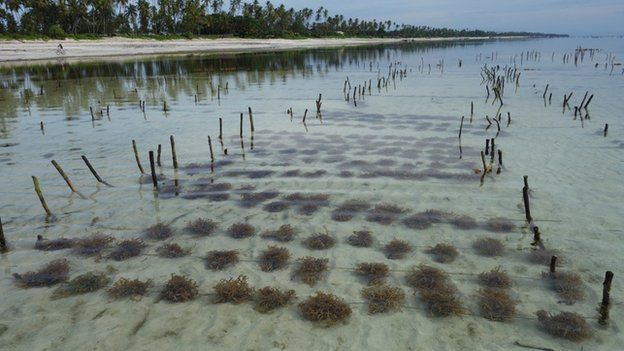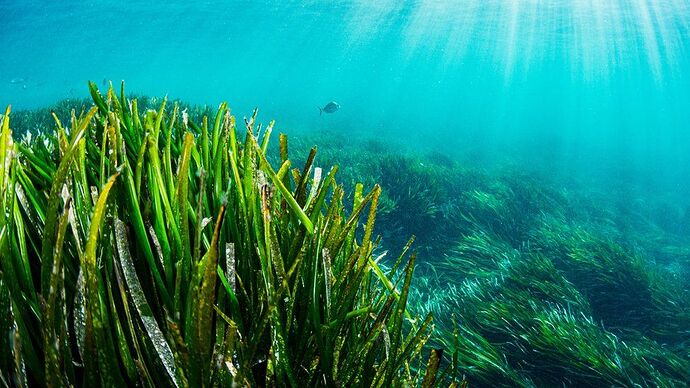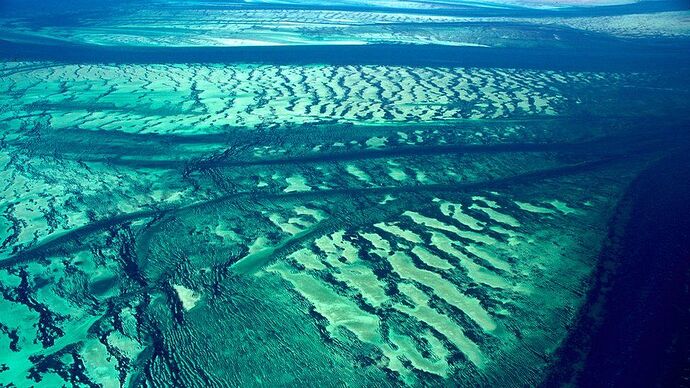Words fail me, even though I was expecting it.
What else were they ever going to do with it? No-one can hold their pee forever, especially when the sky keeps raining more and more down on them. Considering what the US war-criminals did to Japan in '45, and what the Japanese’s own nuclear choices are doing to them now, (actually being silly enough to build coastal nukes on the Ring of Fire, FFS!) you might think of Japan as being fated to be a test-case for what happens to a country when it’s subjected to repeated massive radioactive contamination.
Drawing on something that JMGreer explained a while back, I’d guess that the increase in global background radiation which these lunacies have inflicted on the Earth is not going to make much actually noticeable difference to life on the planet. Mam Gaia, the “tough bitch”,* will swan through it as usual, throwing her children into the breach to live or die as fate decrees, whilst maintaining her vigorous life-grip on the Earth - though for a while there will be increases in death and deformity, of course.
But eventually, some time in the half-life future, things will have cooled off again, and life will still be going. This is by no means a new scenario. We’ve been here before; our remote progenitors, anyway. The Earth has been more radioactive than now, in previous times, yet life still throve, as it’s thriving right now in the Chernobyl exclusion zone, even with its increased radiation-victim count…
Btw, being long-time-frame philosophical about it doesn’t mean that I endorse the Sorcerer’s Apprentice tampering with the fires of creation that human fools indulge. I hope that Fate swats 'em good!
*Lynn Margulis’s unforgettable characterisation of Gaia, the great living-Earth creature, at the end of ‘Symbiotic Planet: A New Look At Evolution’.
Fascinating interview with Margulis here
It’s clear she already knew back then what was wrong with Big Science; like 30 authors on a paper, in my reading pursuing or in service to a - necessarily big - prize. Not conducive to the free flow of ideas! She rejected the pyramidal construction of managed scientific ‘knowledge’ .
I wish she were around now. Thanks for the heads up.
Lynn’s been one of my heroines since way back, Evvy. I simply love her ideas around symbiosis as a major way that species develop: A punctuated mutation process, where the punctuations come about as arrangements whereby distinct species eventually learn to cooperate to mutual advantage, even though their initial interactions might have been where one tried to eat and digest the other, but failed! So right feeling! And she was an early defender of Lovelock’s Gaia Hypothesis: a name suggested to him by his neighbour in the Wiltshire village where they both lived: William ‘Lord of the Flies’ Golding; a classical scholar, of course, to whom the Classical Greek name of Ge (as in Ge-ography), or Gaia, the great Earth goddess, was very familiar. Lovely stuff! And so reconciling with the ancient wisdom traditions of older human societies. No wonder the technocrat-scientists still don’t like it…
Ideal candidate for proper bioremediation both on land and sea, if we can capture the radio-nuclides we can dispose of (a long conversation concerning solar disposal), or store them, more floating free in the marine environment would be beyond catastrophic. It is as true now as it has been for the last 70 years that some causes (Caroline Lucas), are fashionable (Greta Thunberg), others, often the more vital to get to grips with such as; the effects of incineration, depleted uranium munitions, WiFi technology and the radio-active contamination of our seas (Mr. Attenborough), are not, Greenpeace has been nearly as guilty as any in the mainstream of ignoring the long term consequences, in the vast majority of cases no studies whatsoever have been undertaken to examine the reactions of the marine genome. Partial (essentially), neo-liberal NIMBY-ism, people scared of their own shadows who would rather “everyone else” change their behaviour but are unwilling to do the difficult inner work required to change their own attitudes. One might observe; “follow the money!”
“It’s not just fungi of-course, certain reeds and grasses bio-accumulate both chemical and radiological toxins and I am certain that we will find that the same is true of some of the seaweeds, this will be the way we clean the oceans.”
https://www.arafel.co.uk/2016/12/the-undiscovered-science-of-myco-magic.html & https://www.arafel.co.uk/2014/10/mycology-and-bio-remediation.html

# Climate change: ‘Forever plant’ seagrass faces uncertain future
"The green, underwater meadows of Posidonia seagrass that surround the Balearic Islands are one of the world’s most powerful, natural defences against climate change.
A hectare of this ancient, delicate plant can soak up 15 times more carbon dioxide every year than a similar sized piece of the Amazon rainforest.
But this global treasure is now under extreme pressure from tourists, from development and ironically from climate change.
Posidonia oceanica is found all over the Mediterranean but the area between Mallorca and Formentera is of special interest, having been designated a world heritage site by Unesco over 20 years ago.
Here you’ll find around 55,000 hectares of the plant, which helps prevent coastal erosion, acts as a nursery for fish, but also plays a globally significant role in soaking up CO2.
“These seagrass meadows are the champion of carbon sequestration for the biosphere,” said Prof Carlos Duarte, of the King Abdullah University of Science and Technology in Saudi Arabia.
- Six questions about the Cumbria coal controversy
- HSBC plans to phase out coal financing by 2040
- ‘Right to repair’ law to come in this summer
He’s recently published the first global scientific assessment of the environmental value of Unesco’s marine world heritage sites.
“Posidonia acts as a very intensive sediment trap and captures carbon into these sediments. It is also very resistant to microbial degradation, so the carbon is not degraded when it’s deposited on the sea floor. And much of that stays unaltered during decades to millennia.”
Depending on the water temperature, the species reproduces either sexually through flowering or asexually by cloning itself. This ability to clone itself means it can live an extremely long time.
image copyrightSHANE GROSSimage captionSeagrasses are plants with amazing abilities to soak up carbon
“It’s a remarkable plant not only in the capacity to sequester carbon, but also because it’s one of the longest-lived organisms on the planet,” said Prof Duarte.
“In the marine protected areas of Ibiza we documented one clone where we estimated that the seed that produced that clone was released into the seafloor and sprouted 200,000 years ago.”
“A clone could be eternal, kind of,” says Dr Núria Marbà, from the Mediterranean Institute for Advanced Studies in Mallorca.
“If there are no damages that disturb it, it could last for forever - well maybe not forever but for an incredibly long time.”
But despite its ability to live almost infinitely, Posidonia is finding the modern world increasingly treacherous.
This vivid green carpet that extends under the seas in the Balearics faces an ongoing threat from boats dropping their anchors which crush, tear and destroy the meadows.
One study showed that between 2008 and 2012, Posidonia meadows in Formentera were reduced by 44% because of the impact of anchoring.
image copyrightSHANE GROSSimage captionOxygen bubbles on a seagrass plant
The plant also grows extremely slowly.
The damage caused by one yacht’s anchor in a single day several years ago would take almost 1,000 years to restore.
Another threat comes from too many nutrients in the waters, caused by effluent released from water treatment sites across the islands.
But perhaps the biggest and most difficult challenge for Posidonia is climate change.
“Posidonia has an upper thermal limit of about 28C,” says Dr Marbà.
"I think it’s about half of the summers since 2000 that we have exceeded this temperature in the water in the Balearic Islands.
“It doesn’t cause massive mortality. But it’s excessive for the slow growth of the plant.”
image copyrightDBCAimage captionSeagrass meadows off the coast of Western Australia
So what can be done to help protect this amazingly powerful seagrass?
Government action to protect Posidonia in the Balearics has been ramped up in recent years and public awareness of the importance of the species is rising.
But some researchers believe that putting a financial value on the carbon that’s locked up by Posidonia could release the funds to save it.
“As countries try and reach the goals of the Paris agreement, the forecast is that carbon credits are going to see a tenfold increase in value,” said Prof Carlos Duarte.
“Therefore, there’s likely to be an increase in investment in habitats like Posidonia that can lock up carbon and generate these credits.”
This would be welcome news in Ibiza and Formentera. If the carbon that’s already been sequestered by the seagrass increases in value, then it will pay to protect and even attempt to restore the Posidonia meadows.
But time and rising temperatures are the key challenge, as Dr Núria Marbà explains.
"The whole thing of planting seagrasses is that you have to do a massive effort at the beginning to start the process. And then you just wait for the plant itself to grow.
"If we are in a hurry, at human timescales, it’s impossible.
“But if we don’t mind, and we can wait for a few centuries, it will be okay.”
Follow Matt on Twitter @mattmcgrathbbc." https://www.bbc.co.uk/news/science-environment-56378397
Re: “leaky hulk” It’s as true now was it’s always been folks #TLN is environment news poor…it’s that “separatist” politics…it wasn’t me some other b**ger did it…political immaturity…glad to be here instead!


